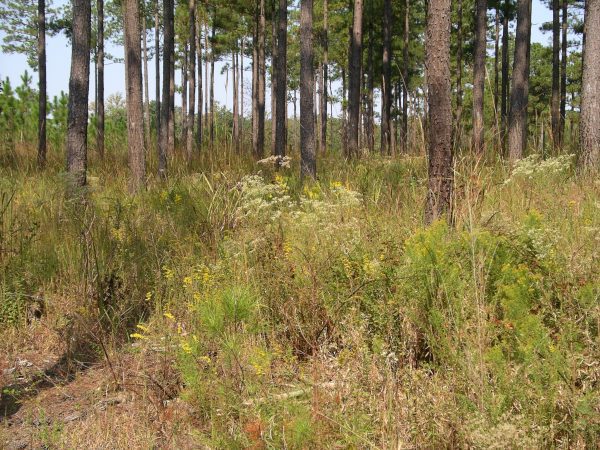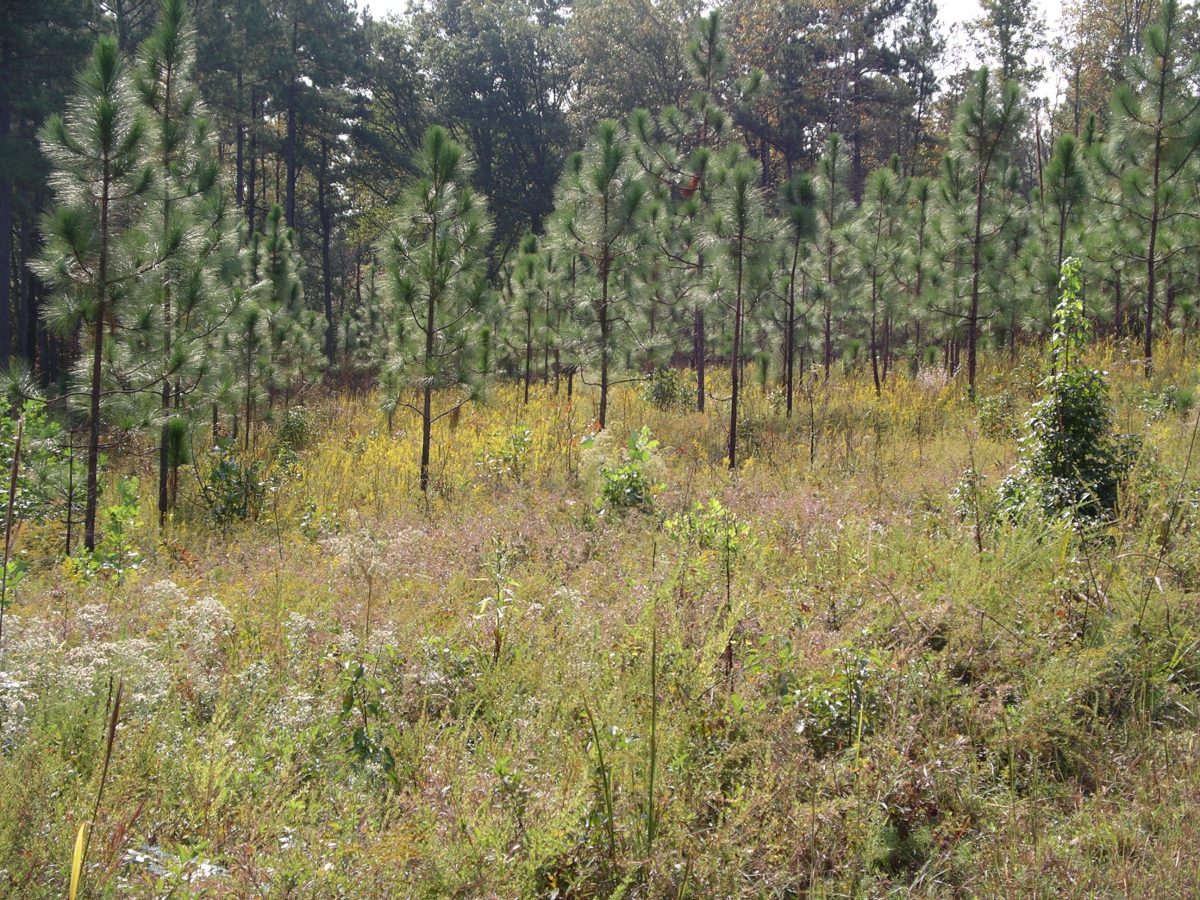Pine plantations can be ‘forests,’ too

I’ve never thought of a loblolly plantation as a bona fide forest. The rows of neatly spaced and stalky trees seem more akin to a long-rotation corn crop. In most pine plantations, trees are thinned in 15 years, and the rest are harvested at 30. Like other agricultural land, pine plantations provide open space, but they typically offer little benefit to wildlife. A young plantation attracts early successional species, but the abundance and diversity dwindles as the pines mature.
My perspective changed last fall after an eye-opening tour of Boon Chesson’s pines. Boon has managed a tract of land southwest of Troy for nearly 40 years. When he bought the property, it was a patchwork of mature, mixed stands of hardwoods and pines interspersed with fields. Some fields were open and others were regenerating in a mix of loblolly, longleaf and shortleaf. Within a decade, Boon had planted loblollies in the open fields and thinned the regenerating pines for pulpwood.
In 1994, right on schedule, he thinned a 23-acre stand of loblollies he’d planted. Standard management would have meant clear-cutting the rest in 2009. Instead, he thinned them again in 2006. He chose this option because he wanted to maintain an overstory to fuel prescribed fires for hardwood sprout control. This will make his site prep easier once he harvests the remaining trees and replants the tract with longleaf. The stand currently contains 60-70 trees per acre with an average dbh (diameter of the trunk at breast height) of 12-14 inches. The trees are healthy and continue to put on growth, and with today’s price of timber so depressed from the downturn in the housing market, he’s in no hurry to cut them.
 These are the pines that made such an impression on me. Boon burns the stand on a two-year rotation. The expense is offset by a 10-year WHIP (Wildlife Habitat Incentives Program) contract, a cost-share program through the Natural Resources Conservation Service. The stand is as beautiful as some of the well-managed longleaf tracts I’ve seen in the Sandhills. The trees are widely spaced, with a high canopy. Native grasses and wildflowers are abundant in the understory. Beyond the aesthetic appeal to the human eye, the stand is also attractive to wildlife. Boon regularly hears quail and sometimes flushes a covey on his daily walks.
These are the pines that made such an impression on me. Boon burns the stand on a two-year rotation. The expense is offset by a 10-year WHIP (Wildlife Habitat Incentives Program) contract, a cost-share program through the Natural Resources Conservation Service. The stand is as beautiful as some of the well-managed longleaf tracts I’ve seen in the Sandhills. The trees are widely spaced, with a high canopy. Native grasses and wildflowers are abundant in the understory. Beyond the aesthetic appeal to the human eye, the stand is also attractive to wildlife. Boon regularly hears quail and sometimes flushes a covey on his daily walks.
After a wildfire started on an adjacent U.S. Forest Service tract in 1991, he realized controlled burns were necessary to reduce the hazard to his timber and to nearby homes. Using fire as a management tool spurred his interest in the Piedmont longleaf on his property. It also led him to become a charter member of the N.C. Forest Stewardship Program, a voluntary program that gives landowners with technical assistance in developing a management plan and recognizes their efforts to promote conservation on their timber tracts.
After hurricanes damaged a site he intended to manage as an upland hardwood forest, he cut everything except the scattered longleaf, then planted additional longleaf seedlings. In 2000, a snowstorm took a toll on some of his trees, but it also created a new opportunity. He clear-cut some of his loblolly and shortleaf pines and replaced them with longleaf. Now, as his longleaf stands are catching up to his loblollies, both are managed for wildlife and timber.
Boon has carved the various stands into manageable compartments. In effect, he has created a series of experimental plots. We still have a lot to learn about fire ecology in Piedmont longleaf forests. By conducting burns in different seasons, he can see which is more effective at promoting native grasses and wildflowers and controlling hardwood seedlings and invasive species.
Pine plantations will never replicate the diversity of plants and wildlife in mature longleaf or hardwood forests, but Boon Chesson is setting a fine example of how to maximize their value as habitat and still enjoy the financial benefits of a working forest.
Information about WHIP is available at www.nrcs.usda.gov. For information about the N.C. Forest Stewardship Program, go to www.dfr.state.nc.us.